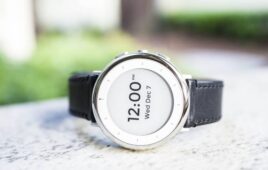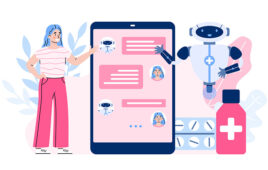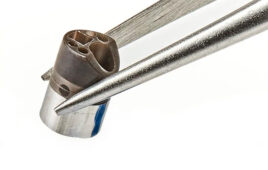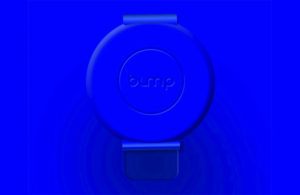
(Image courtesy of Tharsus)
Smith & Nephew (NYSE:SNN) having its employees wear devices made by Tharsus to help with social distancing as they return to the office.
A report in The Telegraph outlines how the London-based medtech company is providing vibrating bracelets from Blythe, England-based Tharsus to keep the six-foot (two-meter) distance widely recommended for preventing the spread of COVID-19.
Smith & Nephew held a three-week trial for Tharsus’ Bump system, which provides a “gentle, non-intimidating” vibration if two employees get too close, according to the report. The system was put to use in Smith & Nephew’s laboratories, warehouses and on its manufacturing floor. The company demonstrated how it uses the Bump system, along with other safety measures, as it returns to the workplace in a video.
“The health and safety of our employees has been a priority throughout this crisis,” Smith & Nephew director of operations strategy & transformation, wound care, Mike Buckle said in a news release. “The Bump system is proving its value in validating the measures we have put in place, helping us refine and improve in other areas, and giving employees direct real-time feedback to help them ensure they are safely social distancing.”
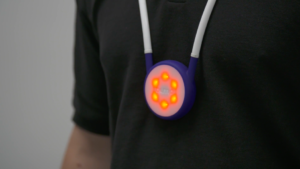
Image from Smith & Nephew
One additional function for the Bump system includes collecting data to allow companies to monitor behavior and identify potential hotspots where social distancing may prove difficult. However, Tharsus told The Telegraph that it does not track workers’ movements as part of the data collection.
Last week, government officials began raising concerns over “ghost towns” in city centers, according to the report, and are urging companies across England to return to the office.
“Now that workplaces are opening up to employees, the onus will be on businesses to ensure they are calibrated in a way that reduces risk to staff,” Tharsus CEO Brian Palmer said. “Many lockdown restrictions may have begun to ease, but social distancing remains one of the most effective ways to prevent the spread of COVID-19, which is not always easy in closed environments.
“By working with partners like Smith+Nephew to trial Bump, not only do they benefit from data that can help them make better decisions on workplace configuration, but we receive feedback that allows us to further improve the system itself.”
Similar technologies have been touted throughout the pandemic as the world looks for ways to return to “normal.” In May, Imec spinoff Lopos, with the Ghent University (Belgium), announced its Lopos SafeDistance wearable for promoting safety during the COVID-19 pandemic.
The Lopos SafeDistance wearable uses Lopos’ ultra wideband (UWB) technology, developed from R&D at Imec and the Ghent University. When two wearables approach each other, the exact distance is measured and an alarm is activated when the minimum distance is not respected.

